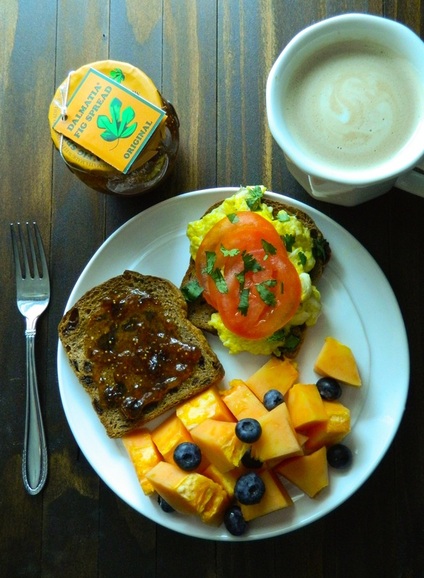But what if you are doing all the right things - making lists, shopping only on the outer perimeter of the store, clipping coupons - and still your grocery bill is too high?
These types of stores often sell limited quantities of certain items in addition to their base product lines. This can be a bit of a treasure hunt as new products are rotated in. The trick to saving money here is not to overbuy just because the price is reduced. Also, take care not to load up on the junk. Check out these healthy bargains from a recent shopping trip to Big Lots:
- 15oz cans of Muir Glen Organic Fire Roasted Tomatoes: $0.80 versus $2.99 at the grocery store.
- 8oz bags of chia seeds: $3.50 versus $5.99 for a 6oz bag at other retailers.
- Half gallons of Blue Diamond Unsweetened Almond Milk: $2.95 versus $3.99 elsewhere.
- Kashi Go Lean and Autumn Wheat Cereals: $2.80 versus $3.99 and up at other stores.
- Krave Sweet Chipotle Beef Jerky: $2.50 versus $7.99 at other locations.
- Freeze Dried Peaches: $1.25 versus $3.49 - $5.99 or more at other retailers.
2: Don't Discount Perishables
Slightly overripe or stale perishables are a gold mine for budgets. Grocery chains with an in-store bakery might offer a 50% reduction on a variety of day old whole grain breads, which when refrigerated or frozen can be kept for weeks. The same is true for fruits and vegetables, many of which can be preserved by cooking, canning, drying and freezing. Below are a few ideas:
- Stale or Day-Old Bread: refrigerate any portion that can be used that week. Freeze the rest. When ready to use, thaw and toast for the best texture and flavor.
- Brown Bananas: peel, cut into chunks and freeze for later use in banana bread, smoothies or ice cream.
- Citrus: juice, then refrigerate or freeze.
- Other Fruits: freeze, make into fruit leather, use a food dehydrator to make dried fruit.
- Zucchini: spiralize into noodles, grate it for bread, or dice for use in stir-frying. Then blanch and freeze.
- Tomatoes: blanch, remove the skins and seeds, crush, then can or freeze for sauce.
- Eggplant: peel, slice, salt and rinse. Then blend into a dip or layer into lasagna.
- Green Beans: blanch and freeze.
3. Set Aside Money For Spontaneous Purchases
This tip is key for staying within a grocery budget. And more effective than shopping the perimeter of the store where strategically placed impulse items abound. When writing up a list of what needs to be bought, include as a line item a dollar amount that you are willing to spend on items not on the list. Then below that, write out the reason you are limiting yourself to this amount. It might look something like this:
- apples
- pasta
- chicken
- broccoli
- crackers
- $10 limit for impulse purchases
- Do not spend more than $10 - must save! Yearly retirement goal not met!!
4. Know What Food Should Cost
Sales can be confusing to the consumer. A lot of people pay little attention to what food costs versus what it should. For example, the everyday low price in one store might be quite a bit lower than the sale price another store is heavily advertising. Sales circulars can be misleading. A person who is knowledgeable about seasonal rates will know that a 2 for $7 advertisement on ice cream is not a great deal. Rather they will wait for the seasonal push when prices drop to $1.99 each. Likewise, a pint of non-dairy ice cream for $4.99 is really not a good deal. During a sale, the cost might drop as low as the regular price of dairy ice cream. But is that a good enough bargain? A person has to weigh the benefits against their budget and decide what they are willing to spend.
A box of cereal labeled $3.99 should not necessarily cost that much. Consider how many ounces are in the package. How many meals or snacks you will get out of it. Which stores might sell it for less. Whether current gas prices justify the cost. How it compares to the generic store brand. And most importantly, what are you willing to pay for it?
There are many new and interesting snacks on the market. Chia bars are just 100 calories each and surprisingly filling, but are they worth paying $1.50-$1.99 each? Beanitos chips are also delicious with a number of nutritional benefits. They might retail for $2.99, or drop to $2.49 during a sale, but maybe you have a cap of $2 that you are willing spend on any bag of chips. As it happens, a bag of vitamin-A packed sweet potato chips falls within your budget, so you pick that up instead. Having this information will arm you against overspending.




 RSS Feed
RSS Feed